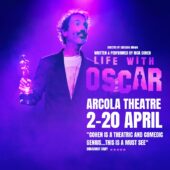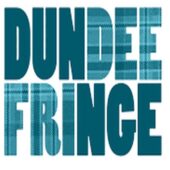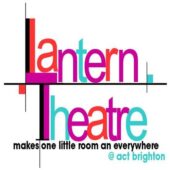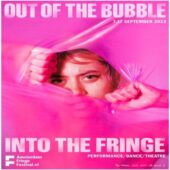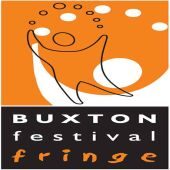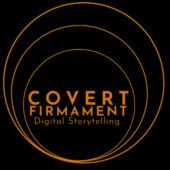Brighton Fringe 2014
An Extraordinary Light
Breathe Out Theatre

Genre: Solo Show
Venue: Brighton Media Centre
Festival: Brighton Fringe
Low Down
Something’s got Rosalind Franklin’s goat. And I don’t blame her. If I had made a major contribution to a field of science which has revolutionised not only medicine and chemistry but our very understanding of what it means to be who we are, and nobody had even heard of me, I’d be pretty miffed too.
Writer/director Rob Johnston and actor Katherine Godfrey are in town to set the record straight. This is a confidently delivered monologue that knows its stuff.
Review
Brighton Media Centre is exactly one hundred and eight paces from my front door. I worked on its top floor as a computer programmer for a year or so in the nineties. I arrive ten minutes early, and pop in on their exhibition of holograms (which are very cool, by the way – runs until 1st June). Since I’m about to review a theatre piece, and I’m staring at holograms, I naturally start to ponder on theatre’s similarity to the hologram; each audience member, depending on where they sit, who they are, how far they travelled, gets an exclusive experience, which they evaluate from a unique stance.
Disclaimer: my view of the hologram that forms our main attraction for the evening must be declared from the outset. It is fringereview.co.uk policy to employ only practitioners of the performing arts, not journalists, and for the reviewers to be very open about who they are. My practice, as a theatre practitioner, is monologues about scientists. There is a danger, as we venture forth, that I shall find it extremely difficult to reflect on a monologue about a scientist without comparing it – even subconsciously – to my own.
If you want to know whether or not I think you should go and see An Extraordinary Light, skip now to the final paragraph. For a more detailed analysis, stay with me on this one…
The desk is dead centre, and positioned square to the audience. A microscope, a telephone and something else I momentarily can’t recall are neatly arranged upon it. There’s a “danger – radioactive” box on the floor. Stage left stands the Model – what everyone’s been raving about, the latest Model, the Model that turned out to be right, the ubiquitous double helix.
This spatial arrangement is not ideal. When Rosalind sits at her desk, she is completely cut off from the audience, and hidden behind her apparatus. When she is stage left, she is dwarfed by the double helix, and largely uses this part of the stage to stand staring at it in awe. For a show that is making Rosalind out as a key originator of and master over the Model, it seems to have more power over her than she over it. Stage right, meanwhile, is dead space, and probably would be even if the general lighting cover this evening wasn’t so poor over there. You may have hoped that a play about a beautiful interlocking spiral structure that holds the key to life would inspire a more dynamic approach to furniture layout.
Katherine Godfrey is a confident performer who delivers the text with punch and complete clarity. I do not miss a single word for the full fifty minutes. I can’t quite tell to what extent she’s putting on a character and to what extent merely being herself, but it doesn’t matter either way; the portrayal is strong and consistent, and we are in safe hands.
The writing is intelligent and assured. I can imagine it reads very well on the page – themes and motifs recur; it has been well weeded of cliché; there is a flow and lyricism to the succession of ideas explored. As a piece of staged theatre, it is strangely lacking in a here-and-now. I am yearning to know on what pretext I am invited here to hear just this story, and what makes today of all days the day when the telling must be done. I am asking myself why theatre was chosen as the medium here. The advantage that theatre possesses above all other forms is immediacy and nearness, a sharing between performer and spectator. Nothing that happens in our story this evening is live; it is all a recounting of things already surpassed. The telephone rings, on occasion, but it’s not really ringing now: the writer has directed these phone calls abstractly, as distant memories of phones that rang. There is a twist to the story, one which makes many in the audience rock back in their seats, and which does explain the delicately detached air to the piece. The twist, however, stays embedded in the writing. The staged production, like the furniture, unlike the double helix, doesn’t quite manage to twist, and the mood stays largely even-toned to the end.
The nitty-gritty science in this play is delightfully scattered across the acts, and I do love those nitty-gritties; I eat that stuff. The chemical composition of charcoal is likened very cleverly to the gap that moves backwards as people in a queue move forwards (an analogy which, by the way, also works perfectly to explain why electrical current moves in the opposite direction to the flow of electrons in a wire). DNA itself, its base pairs, and the reasons why its structure must be just so, are not given quite the same attention. We are, however, given many welcomed chances to disappear into the beautiful Rorschachtestesque photograph that Franklin took of this structure, “one hundred hours waiting for the image to form one grain at a time”, and which gave Crick and Watson the key to the prize that could have been hers.
That prize is nothing less than immortality.
Our fictional Rosalind for the evening is angry that she has not attained immortality, although she largely represses her emotions. Immortality is a colossal goal, but it is also an abstract one, one that it is difficult to define precisely, and I am left wondering exactly what it is that our Rosalind is after, and whether, indeed, she knows herself. Is it the elusive Nobel Prize? We know (by the end) why she didn’t get one, and we feel sorry for her but there was nothing to be done. Was it being snubbed when they threw that big party? Or is it, as I suspect, a more non-specific grievance at the injustices of the world, the vagaries of fate, the inequality of the genders, and just the bloody unfairness of it all? For me, for theatre, this is too loose a theme.
I have a theory. I may be way off the mark, and only the show’s writer would be able to set me straight (which I encourage him to do). In the programme sheet, one book is listed for further reading, a biography of Rosalind Franklin. Is it possible that Rob Johnston has attempted an adaptation of this biography, or at least has relied quite heavily on this one source? A biography (and I’ve read many, especially of scientists) is a very particular literary genre, with its own conventions, many of which are shared by this evening’s production. Theatre has its own set of conventions, and biographical theatre is a genre of theatre, not a genre of biography. To stage biography, we must therefore start with a theatrical framework in which the biographical details can be explored, rather than, as seems to be the case in this show, starting with a biographical framework dressed up and put on a stage. Don’t get me wrong – this is one of the hardest things to achieve and I have banged my head against many brick walls trying to find the solution. I am relieved I’m not the only one.
Welcome back to those who skipped to the final paragraph. To summarise. For someone who is exactly like me, who has my job and my interests, there would not be a question of missing this – it gave me so much and delivered it so sweetly. For someone who likes a well-written serious monologue that tells you some truths about the world, and maybe who has a particular interest in science or gender equality, I would certainly recommend it. To appeal to a wider cross-section of theatregoers, I would like to see the show develop more of an element of surprise. For people who are new to theatre, or new to deoxyribonucleic acid, there may be more here that confuses than enlightens. This is definitely a worthy project; the story of Rosalind Franklin is a story that needs to be heard, and there’s clearly enough goodwill and talent in this company to make hers a name to honour.
